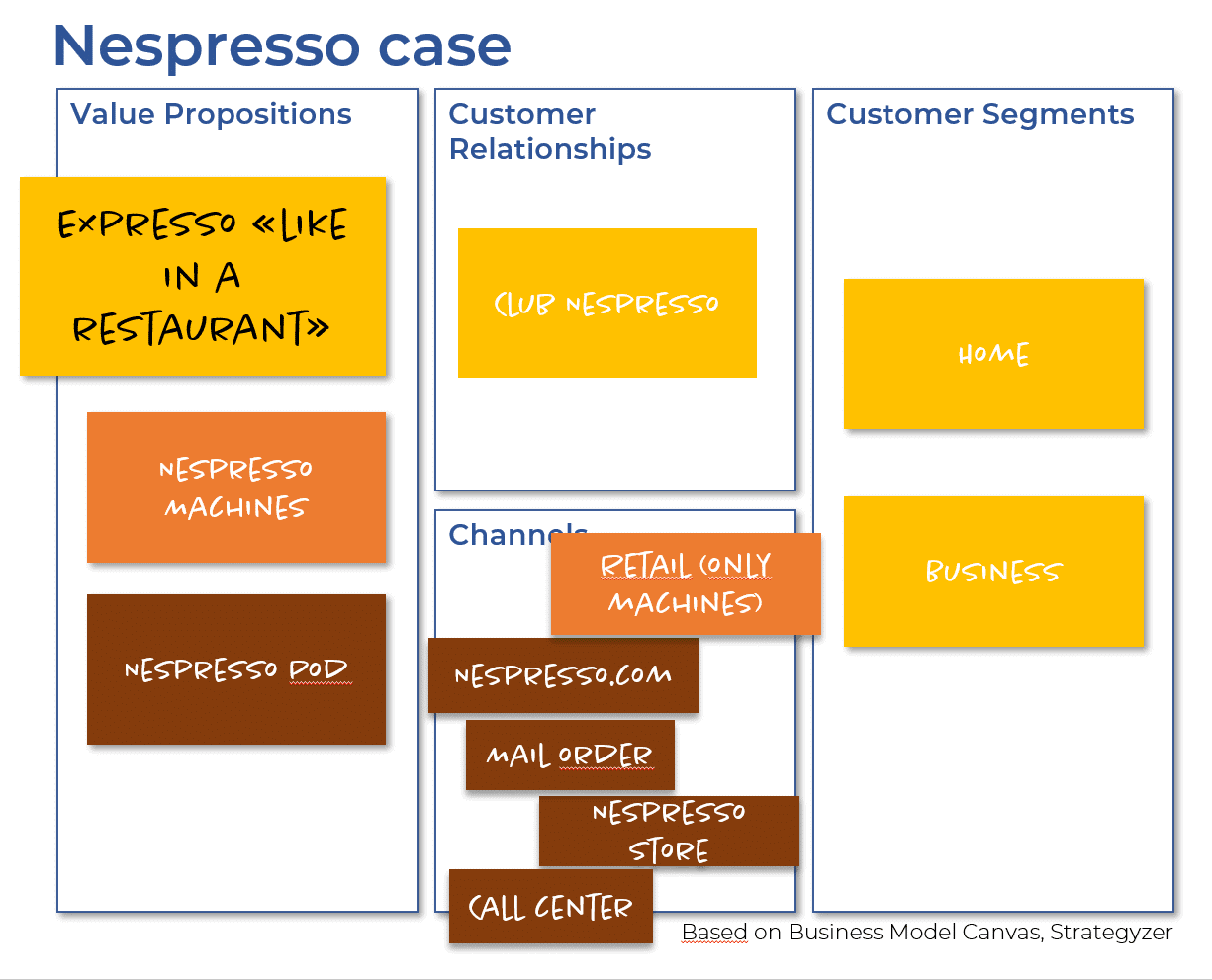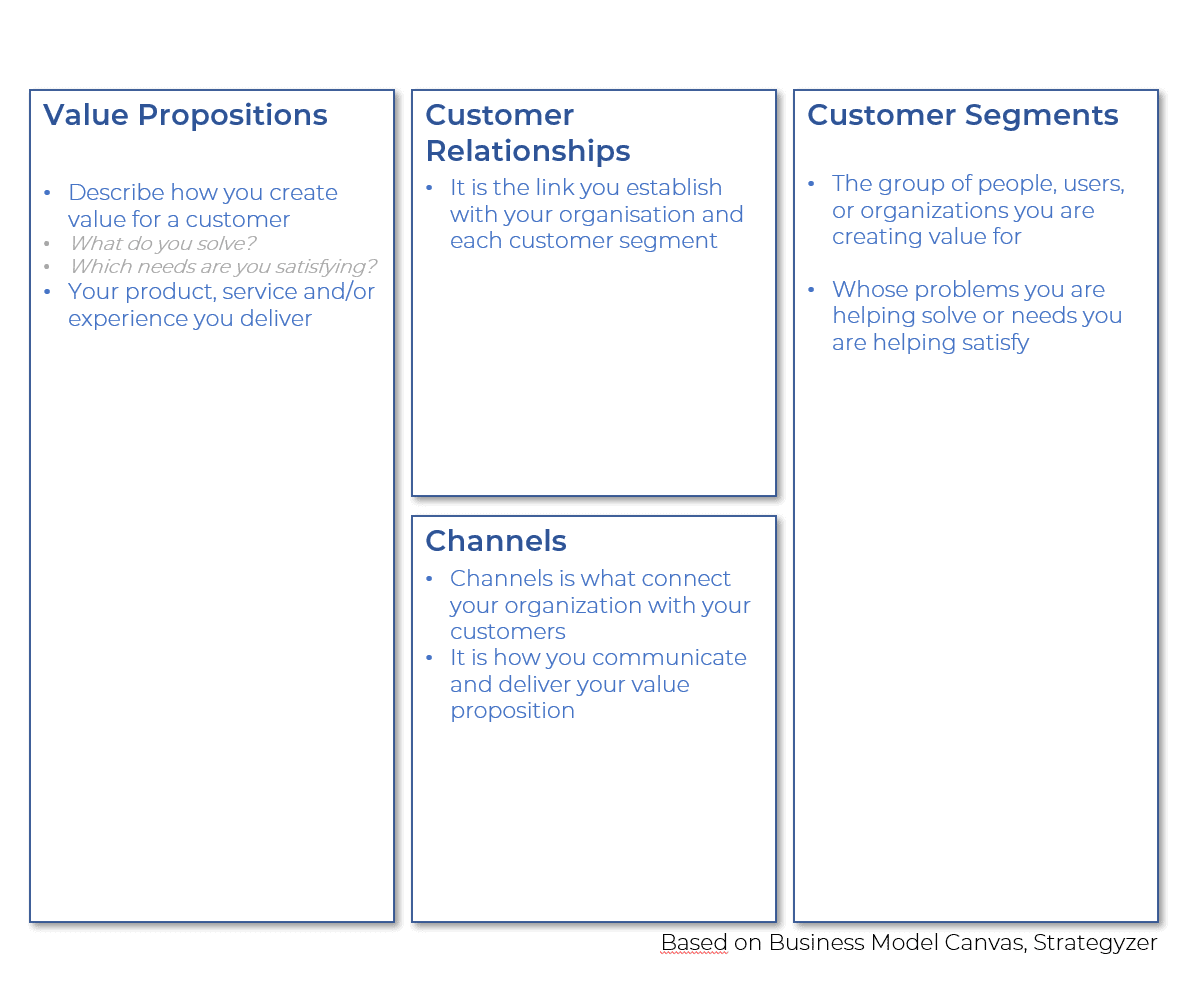Our approach.
A Teasing Overview…
To spark INNOVATION CULTURE everywhere,
we have a LEAN INNOVATION philosophy
with several variables in THE EQUATION,
while our Processes have an iterative FLOW.
LEAN INNOVATION
The state of mind: Learn faster and cheaper
At 2*Spark, we define lean innovation as reducing waste in the discovery phase while creating and delivering new values to customers that are needed and desired.
We extend the statement of Eric Ries that startups “…exist to learn how to build a sustainable business” to any innovative project.
We recommend starting by building quickly Low-Fidelity Minimal Viable Product (Lo-Fi MVP) to see if the vision of the need matches customers and how the problem is.
MVP is a smart learning tools that will move you closer to a winning solution by validating and fine-tuning your hypothesis with your customer.
Furthermore, each time you increase your resources to build a better prototype, the investment will be less riskier because you have previously learned what not to ship.
POTENTIAL INNOVATION IS EVERYWHERE
The Equation
Could you solve it?

How do we define Innovation?
Innovation is a solution that meets new requirements, existing market needs and wants, or unarticulated needs.
And to be sustainable, Innovation should solve an equation with 3 variables (desirability, feasibility and viability) powered by 2 key parameters, namely context and people.
Even if disruptive Innovations (Big I) are more profitable than incremental (small i) ones, both are needed and feed on each other.
Two Questions for you
- Do you have a well-balanced portfolio of Big "I" and small "i"?
- Did you map them?

Any questions? Simply use the chat box.
How do we define Innovation?
Innovation is a solution that meets new requirements, existing market needs and wants, or unarticulated needs.
And to be sustainable, Innovation should solve an equation with 3 variables (desirability, feasibility and viability) powered by 2 key parameters, namely context and people.
Even if disruptive Innovations (Big I) are more profitable than incremental (small i) ones, both are needed and feed on each other.
Two Questions For you
- Do you have a well-balanced portfolio of Big "I" and small "i"?
- Did you map them?

Swipe to learn more about the equation
Desirability
The design, the ergonomic, the characteristics, the price of your solution is an important part of the desirability. It is not the whole story, yet.
There are 3 fundamental rules to make your solution desirable:
#1: It meets people’s needs
#2: People are aware of this need
#3: People are willing to pay to solve it.
To articulate latent needs (Opportunity’s discovery) a design thinker as well as cross-functional teams will focus on three actions: TRY – LISTEN – OBSERVE
A Question For you
- Could you Map the desirability of your solution?
You will meet the desirability and a powerful synergy when your value proposition, your channels and your customer relationships meet your customer needs.
Don't forget! People first!
If you have any difficulties or doubts perhaps you may contact us…
References & Templates
References
- Know Your Customers’ “Jobs to Be Done”, by Clayton M. Christensen, Taddy Hall, Karen Dillon, and David S. Duncan (https://hbr.org/2016/09/know-your-customers-jobs-to-be-done?referral=03759&cm_vc=rr_item_page.bottom)
- Business Model Generation: A Handbook for Visionaries, Game Changers, and Challengers, by Alexander Osterwalder, Yves Pigneur
- Value Proposition Design: How to Create Products and Services Customers Want, by Alexander Osterwalder, Yves Pigneur
Templates
- Business Model Canvas and Value Proposition by Strategyzer
Desirability
There are 3 fundamental rules to make your solution desirable:
#1: It meets people’s needs
#2: People are aware of this need
#3: People are willing to pay to solve it.
A Question For you
- Could you Map the desirability of your solution as shown below?
Don't forget! People's needs first!
If you have any difficulties or doubts perhaps you may contact us…
References & Templates
References
- Know Your Customers’ “Jobs to Be Done”, by Clayton M. Christensen, Taddy Hall, Karen Dillon, and David S. Duncan (https://hbr.org/2016/09/know-your-customers-jobs-to-be-done?referral=03759&cm_vc=rr_item_page.bottom)
- Business Model Generation: A Handbook for Visionaries, Game Changers, and Challengers, by Alexander Osterwalder, Yves Pigneur
- Value Proposition Design: How to Create Products and Services Customers Want, by Alexander Osterwalder, Yves Pigneur
Templates
- Business Model Canvas and Value Proposition by Strategyzer
under construction
under construction
under construction
under construction
under construction
The Flow
Human Centered Design Thinking
It is an iterative, non-linear and learning process that says “Human first”.

Human Centered...
A Human-Centered thinking revolves around a deep interest in developing an understanding of people’s desires, emotions and motivations.
...Design Thinking
Design thinking is a process for cross-functional teams. Individuals are working in teams to tackle problems that could be outside of their core domain of specialization. This co-creative process aims to questioning and challenging assumptions while uncovering unconscious biases to coming-up with disruptive solutions.

design thinking mindset

Swipe to learn more about the Flow
Human Centered...
A Human-Centered thinking revolves around a deep interest in developing an understanding of people’s desires, emotions and motivations.
...Design thinking
Design thinking is a process for cross-functional teams. Individuals are working in teams to tackle problems that could be outside of their core domain of specialization. This co-creative process aims to questioning and challenging assumptions while uncovering unconscious biases to coming-up with disruptive solutions.
design thinking mindset

design thinking mindset
Understand
The goal is to develop a holistic understanding of the users, while unlocking creativity
Explore & Empathise
Gathering data
The idea is to go outside the building to VERIFY your hypothesis and to DISCOVER what people really need, sense & share feeling that other feel. By listening what people say and then by observing what people really do, we will gain an understanding of your Customer jobs, pains, and gains.
Tools to TRY things yourself
To put in the shoes of
Tools to LISTEN what people say
Interview
Research on the web
Tools to OBSERVE what people do
Immersion
Define
Analysis:
We organise, interpret, and make sense of the data we have gathered.
Synthesis:
It involves to creatively piecing the puzzle together
Tools to analyse the empathy stage
Sharing Inspiring Stories
Journey map/ Personas / scenarios
Affinity Map…
Value Proposition Canvas
Tools to sYNTHESIS & jump into the ideation stage
Problem statement
How Might We Questions
Re-Mapping Stakeholder
Explore & Empathise
Gathering data
The idea is to go outside the building to VERIFY your hypothesis and to DISCOVER what people really need, sense & share feeling that other feel. By listening what people say and then by observing what people really do, we will gain an understanding of your Customer jobs, pains, and gains.
Tools
Tools to TRY things yourself
To put in the shoes of
Tools to LISTEN what people say
Interview
Research on the web
Tools to OBSERVE what people do
Immersion
Define
Analysis:
We organise, interpret, and make sense of the data we have gathered.
Synthesis:
It involves to creatively piecing the puzzle together
Tools
Tools to analyse the empathy stage
Sharing Inspiring Stories
Journey map/ Personas / scenarios
Affinity Map…
Value Proposition Canvas
Tools to sYNTHESIS & jump into the ideation stage
Problem statement
How Might We Questions
Re-Mapping Stakeholder







Together, you are stronger
Nowadays, partnership (privat & public), project build with cross-functional team, and co-creation with top and down people are the winning solutions.